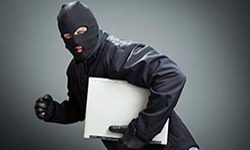Our goal at IT innovators is to educate you on the dangers of the technology we all use every day. Phishing scams cost American businesses half a billion dollars a year. Let's take a look at what exactly what Phishing is and how not to get scammed.
What is phishing?
Phishing is a cybercrime targeting you via email, phone, or even text by someone posing as a legitimate contact, company, or vendor to lure you into providing sensitive data to them. These cyber criminals are looking for any type of personal information such as bank or credit card information, account details, usernames and passwords.
There are many different types of phishing scams, but the most important part is how to identify them.
Always check the sender email
Even if the name on the email is someone you know, always check the email address. Make sure the name and the domain (the part after the @ sign) are correct. Take note if you receive an email coming from your bank or any vendor you work with and the domain isn’t the same as your bank or vendors domain, that’s a big red flag. This is also true for individuals within your company as well.
Look for spelling errors
Read through the email carefully. If there are spelling or grammar issues in an email from a well known business, or brand, be cautious. Sometimes spelling mistakes happen, but in general companies are pretty serious when it comes to their emails, and more than a few misspellings and grammatical errors can be a big warning sign.
Don't click on the link
If there are any links in the email, hover over each link but don't click on it. This will give you a preview of the actual website URL you would be sent to. If it’s supposed to be sending you to your bank’s website but the website URL isn’t sending you to your bank’s domain, don’t click the link.
Although emails are the most common phishing scams phone scams are common as well. Never give away any confidential information unless you are absolutely certain you are emailing or speaking with the right person. If you have any doubts email the person directly. Do not reply to the email you received to verify they sent you the original email. Or if someone calls you ask the person for the business name and phone number to contact them back at and then verify through a browser search the information they gave you matches.
We can help you identify phishing and provide filtering and layers of security to better protect your business.








